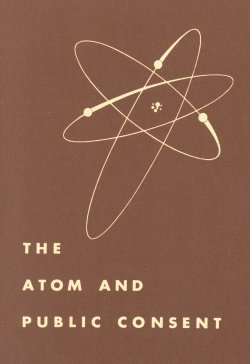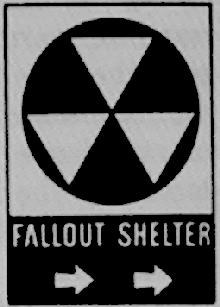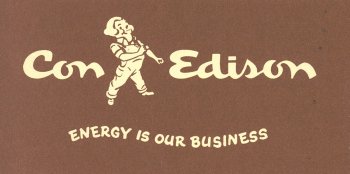ATOMIC PROGRESS MADE
But in spite of the clamor, perhaps even spurred on by it, there has been steady progress. Power reactor plans have gone through successive blueprint stages. Mathematical problems of incredible complexity have been fed into electronic computing machines and have emerged on the other side translated into answers on which designs are based. More test facilities are
under construction where these calculations can be checked and rechecked. These tests do not imply distrust of the theories and the computations but the atomic field, with its many unknowns, is not the place for cut and try methods. The industry, with a substantial stake in the atom, wants to be as sure as is humanly possible that it is proceeding sanely and safely.
The industry feels that competitive electric power from the atom cannot be forced in a hothouse atmosphere of government funds. Instead, it should be handled like all the many successful innovations that have been adopted over the years. We can point to the successful introduction and on-the-job development of turbines, of pulverized fuel, of the alternating current network, of high tension transmission as examples of the surest and swiftest way to follow in puting safe and efficient atom-power on the line.
We believe we are skilled in the practical application of new devices and methods.
Lured by early publicity, investors rushed into the atomic field as if it were another Klondike. Many of these ventures proved to be subcritical, in atomic terms. The head of one major manufacturing concern found it necessary to tell his stockholders that profits from hoped-for atom business were at least ten years away.
These early excesses are being ironed out and we are left with the impression that the investing community, and particularly their technical advisors, are fully aware of the atom's potential.
GENERAL PUBLIC UNAWARE
The general public is the remaining factor. The general public is not yet with us in the application of atomic energy to the generation of electricity.
Here we have a once-in-an-industry opportunity. Except for the Shippingport plant, which will be in operation next year, nearly all of our projects seem scheduled for operation about 1960. We have almost four years of detailed design work and actual construction ahead of us.
In this interim period, we should make the most of our opportunity to explain the facts of atomic life to the public. This will not be easy.
But it does seem that the experts in the field, given the proper amount and type of support from the industry, should be able to do this job.
There are two mental blocks in the public mind as far as atomic energy is concerned.
The first, of course, is the original use of atomic energy as a destructive force. Even now, many people draw back from atomic information with a reflex action that is more emotional than logical.
The second block is the complexity of the subject. Atomic science grew up in a laboratory of its own, cut off from the world by requirements of military secrecy. Those of us who got into the lab after the science was in nearly full flower (by means of that small door cut in the wall in the shape of the letter Q) found a new vocabulary and a new order of physical measurement that stunned the imagination.
Now, however, several doors have been opened to the laboratory and there are only a few dark corners still hidden from public gaze.
The new science has been poured over the public in sizable doses. For a housewife who does not even guess how her automatic washer timing mechanism works, for an artist who can never balance his checkbook, this new atomic language might as well be Sanskrit. All you have to say is "atom" and these individuals jump to the conclusion that they will not understand.
Since they will not, they can not.
These two mental blocks are something for our communications people to contend with. It seems to me the emotional fear of atomic energy can be removed by placing emphasis on the positive benefits of this new fuel. It also seems to me that atomic energy can be made fascinating and human, which would do a great deal to remove the second type of mental block.
ATOM MUST BE ANNOUNCED
In any case, something must be done to bring the story of atomic energy in the field of electric generation to the public within the next few years. Our recent experience in New York indicates that the job can be done.
Every few years, Consolidated Edison conducts an opinion survey in its territory-New York City and Westchester County. We have . just completed such a study which for the first time included some questions on atomic energy.
We found that 22 percent of the people in our area knew we were involved in the application of nuclear energy to the generation of electricity. In Westchester County, where our nuclear steam electric plant will be located, we found that 29 percent of the public had heard of our plans. Next, we found that only 25 percent of the people in the City favored development of atomic electricity by private enterprise compared with the 43 percent endorsement of private enterprise in the atomic field found by the recent Opinion Research Corporation study of national opinion.
The drop from 43 percent endorsement nationally to 25 percent endorsement in New York City, reflects, at least in part, some of those differences that distinguish the City from the rest of the nation.
In Westchester County, however, we found
that 35 percent favored development by private enterprise.
We told the people we questioned that Con Edison was working to use atomic energy in making their electricity, that is, we told the respondents who did not already know it. We asked them all if they thought this development was a good idea. Sixty percent of the people involved in the study thought it was a good idea.
Remember, earlier in the quiz only 25 percent thought private enterprise should undertake this venture. But 60 percent thought it would be a good idea for Con Edison, their local electric utility, to do the same thing. Even among those who originally favored government development when the question was first asked them on a broad basis of ideology, a total of 55 percent thought it was a good idea for Con Edison to go ahead with atomic plans.
The main lesson we all learned, I believe, is that in New York City today we cannot appeal for support on the basis of ideology, political philosophy, or broad generalities. We must use our own name. People pay their bills to us. They see our trucks and our advertising. They know their neighbor as the "man who works for Con Edison." When we can add some information to the magic of our corporate name, the figures go even higher. Among that fifth of the people who knew we were active in the atomic field before the interviewer called on them, some 84 percent thought it was a good idea.
The difference between the figures is large.
With the old argument of private enterprise we can find 25 percent support for our atomic plans.
Add the information that the local electric utility is interested in atomic development and the vote of confidence rises to 60 percent. Increase this information with just a few details about
the plant we are going to build and the favorable vote goes up to 84 percent.
Of course, there are still those whodisapprove and those who are undecided. It would be a dull life indeed if everyone agreed on an issue as complicated as· this one. Among the customers of the electric utility industry, I am sure, there will always be a hard core of dissenters whom we cannot hope to convince. But we can certainly reduce the fertile area around these, dissenters by cutting down the percentage that has not yet decided and by strengthening those who favor our program.
Public acceptance is something we need very badly in this business of ours. The occasions when we need public support are following each other more and more closely these days.
TIME TO SPEAK
While the electric industry is one of the foundations of American civilization, we must always remember that we can be replaced. Some of the members of the club have been. There was a time when the gas industry thought it held an enduring natural monopoly on the lighting market.
|


